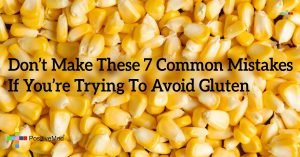
The foods we use to fuel our bodies are a major player in our overall health. Our bodies use food as medicine to either help feed our health or amplify disease. While it is common knowledge to avoid junk foods, beyond that, everybody reacts to food differently. While one healthy food may flare up one person, it may act as a great medicine for another. This phenomenon may be due to one of several reasons. Food allergies, food intolerances, and food sensitivities can all affect how each body reacts to different food
Food allergies are a severe response, involving the immune system. An allergic reaction may cause rashes, swelling, hives, itching, and even difficulty breathing which may lead to death.
Food intolerances, however, don’t involve the immune system and only happen when the body can’t digest, or is irritated by, certain foods. These typically results from an enzyme deficiency.
Food sensitivities resemble intolerances, but their bases may be unclear and they may have a delayed reaction. Intolerances and food sensitivities may lead to bloating, runny nose, migraines, inflammation, brain fog, stomach ache, flu symptoms, and IBS.
According to the World’s Healthiest Foods, part of the U.S. Centers for Disease Control, 90% of all food allergies come from peanuts, wheat, fish, hen’s eggs, cow’s milk, shellfish, and soy. The eight ways to find out if you have food sensitivities is to eliminate these eight foods from your diet. Here are some examples of elements of these foods that cause health-related issues.
Wheat
There is a common sensitivity to gluten, which is in wheat, that begins with a simple sensitivity and ends in celiac disease. Meaning, there is a large spectrum on which one’s wheat issues may fall. Tests can be done to determine a wheat sensitivity, but an elimination diet also helps to reveal the truth.
Eggs
While an egg has many nutrients, it is also a common problem for people. The egg white is usually more immunoreactive than the egg yolk. Albumin is the protein in the egg white that is able to pass through the lining of the intestines if you suffer from a leaky gut, which can cause inflammation.
Dairy
RELATED ARTICLE: Leaky Gut Syndrome: What It Looks Like and What To Do About It
The protein that is in dairy, known as casein, is a common sensitivity. Additionally, most cows are given antibiotics and hormones which causes farmers to have to pasteurize and homogenize the dairy, removing the fat. To replace this nutrition, synthetic vitamins are used in the milk, which people may have a reaction to. Fermented dairy, however, like grass-fed yogurt and kefir, stops some of the problems with casein sensitivity and is, therefore, better tolerated.
Nuts and Seeds
The roughage and proteins in nuts often cause irritation. Additionally, most nuts come from stores are coated in industrial seed oils which are often inflammatory. Raw nuts are better tolerated than store-bought boiled or roasted nuts.
This all leads to the need to do elimination diets. This creates eight ways that you can learn if and what you are sensitive to when it comes to food.
Elimination Diets
During an elimination diet, you stop consuming certain foods for three or four weeks and monitor your health as the food is worked out of your body. Slowly reintroduce the food to see if you have any reactions or symptoms.
READ ALSO: She Spent Years Trying to Heal Her Gut, Brain Fog, and Fatigue. Here’s What Finally Worked
The best elimination diets eliminate the largest number of potentially hazardous foods. This sounds like a lot of work, but in the end, will provide answers. To start, an effective elimination diet removes wheat, dairy, eggs, soy, corn, beef, pork, chicken, coffee, nuts, citrus fruits, beans/lentils, and nightshade vegetables. This will leave a diet to be primarily comprised of rice, turkey, vegetables, fruit, fish, and lamb.
The length of an elimination diet varies, depending on the severity of symptoms and the age of the patient. Children may be able to see an improvement in as early as a week, while adults typically need around a month.
At the end of the elimination, slowly reintroduce each single food group for just one day. Then, monitor any symptoms for two additional days. If there are no symptoms, try reintroducing a different food three days in. Continue this process until you’ve decided if any foods cause an issue. The entire elimination process takes about 6 weeks and results in a lot of knowledge about how your body reacts to different foods.
Food sensitivities and allergies can be very limiting and cause stress to anyone. It is helpful to learn the basis of your food issues so you can know which foods to avoid and not have to suffer without knowing the root cause.






